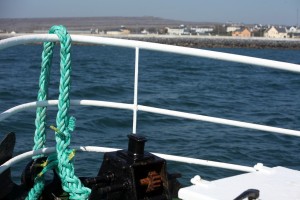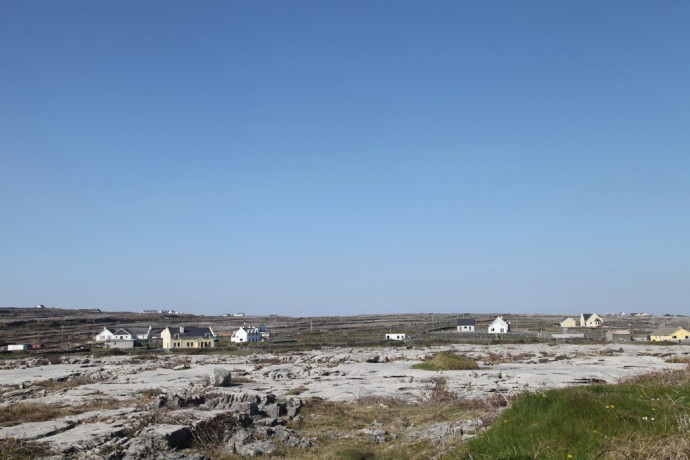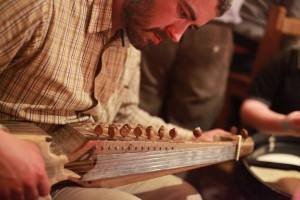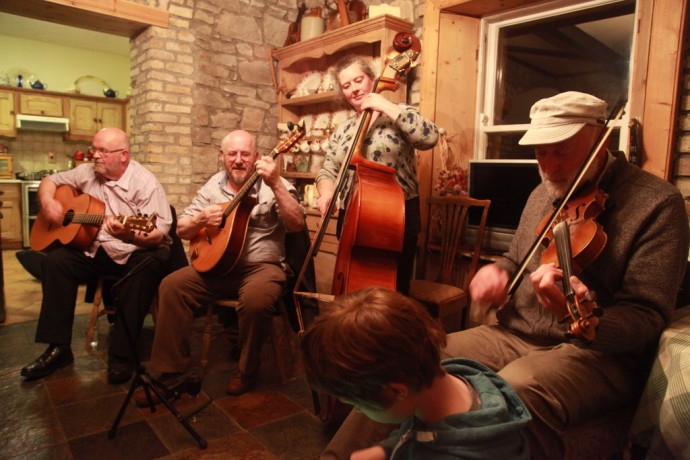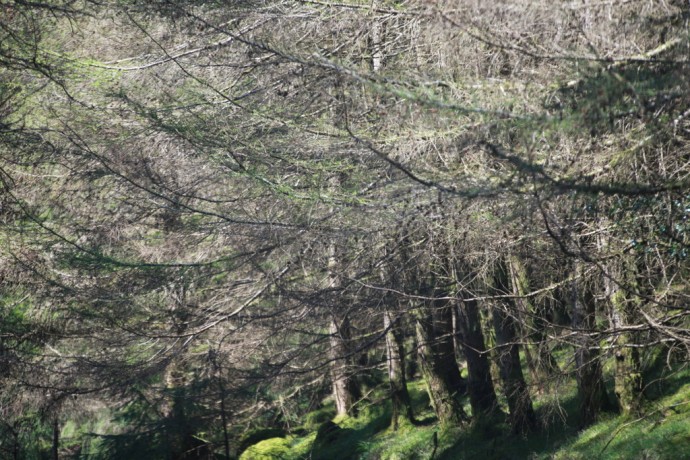What is it about islands? Why do they have such appeal to us? All around the world they are treasured as special. Sometimes the residents are fiercely protective. In Australia we have many that hold a singular place and I was lucky enough to live on one such of these – Magnetic Island on Australia’s Great Barrier Reef. There are others though; Rottnest Island, where you can’t live but it is still very dear to the heart of Perth people, or Kangaroo Island off South Australia, or the beautiful Lord Howe Island among them. Ireland has a few too, such as Tory, Achill, Skellig and of course the Aran Islands.
Mention the Aran Islands and you immediately have my attention. The place has a mysterious lure. Despite knowing little about it (except that it is where the Clancy Brothers got their jumpers from and one of the most omnipresent tunes in sessions around the world is named after one of the Islands) it was a place I felt I must visit. I have been on two separate occasions. First, on a freezing summer’s day in July 2014, to Inisheer for an overnight stay; and more recently over three glorious sunny, warm days in April 2015. That’s Irish weather for you – freezing in Summer and hot in Spring!
The Islands are accessed either from Galway or Doolin, in my case for both trips I took the boat from Doolin, half an hour from my home in Caherush. My first visit was a spontaneous decision based on the fact there was blue sky in the morning. Of course by the time the boat left the weather had turned and the squally rain and howling wind off the Atlantic made for a very rough half hour crossing which took over an hour as we were buffeted by giant waves. At one point we stopped in the middle of the ocean in a futile attempt to retrieve a feral buoy. This was in contrast to my trip to Inis Mór when the sea was mirror calm with not a ripple. So I saw the islands in its various moods.
Technically the islands are part of Galway, but geographically, geologically and culturally they belong to Clare as the three Aran Islands are an extension of the Burren. They all have that wild inspiring landscape that I found so enriching in north Clare and that I have blogged about before. https://singersongblog.wordpress.com/2014/06/20/the-burren/
https://singersongblog.wordpress.com/2014/08/29/the-burren-again/
So back to my first question. With the Aran Islands, is it that inconvenience mixed with expectation that getting there involves that makes it attractive to visitors? Or that feeling that once there you are completely cut off (well maybe not now with smartphones). Or the slower pace? How would it be to actually live there?
Of course many do and Melissa and Johnny Gillan and their five children are among them. Melissa is from Maine and married an Irishman from Aran who after their second child convinced her to leave the States and start a new life on Inis Mór. Melissa tells the story way better than I could on her blog (which is how we met) http://thearanartisan.com/2014/11/08/i-live-in-aran/. I have never seen anyone happier. She now has five kids and an enviable lifestyle where she has created a paradise – a garden that sustains her family within this harsh environment and is moving towards her dream of starting a business based on this. The whole family is involved, with the kids nurturing the garden and animals with a sense of pride. Her philosophy is captured by the layout of the garden beds which spell the word LOVE and which was revealed with delight by her kids after an enthusiastic guided tour. I was invited to dinner there one night, which comprised razor clams gathered on the shore, a tuna steak from a fish caught by Johnny’s brother off the coast, potatoes, carrots, kale, rhubarb crumble and a parsnip cake. All from the garden and made with skill and affection. The kids embrace the lifestyle. I was reminded a little of the zest for living my own kids had on Magnetic Island for the three years we lived there. Melissa and Johnny may not be your typical Aran family, I don’t know, but I also met Cóil and Grainne, both young islanders who gave up their day to show me around their island with an obvious pride. I was greeted with nothing but warmth and hospitality.
Both the Islands I visited seem to have somewhat different characters. Inis Mór (the Big Island) has sweeping landscapes with hardly a tree; massive limestone pavements and steep cliffs. It doesn’t seem heavily populated but there are about 900 people spread across the entire island. Inis Oírr is smaller with about a third of that but the houses are more concentrated around the main settlement of Inveragh and the fields as defined by the stone walls seem smaller. Both have the same sparse pasture, lush in places barren in others. Inis Mór has more tourists and a lot more bicycles but it is easy to avoid the day trippers by starting early. The evenings everywhere are gloriously empty of people except for the inevitable craic behind the walls of Ti Whatty or Rory’s.
There is plenty for the tourist. On Inis Mór, bike hire is popular and the circuit to the Dún Aonghasa fort is a well-worn trail. But off the beaten track are some amazing sites such as the Black Fort, the Seven Churches and Teampull Bheanáin, reputedly the smallest church in the world measuring around 3m x 2m. This unusual church can be seen from all around the island and was the best location I found for viewing the unique Burren flora. Then there is the spectacular Worm Hole or Poll na bPeist. It is a hole in the rock platform that looks like it has been sliced out by the hand of Fin McCool himself. There is a more prosaic explanation that relates to erosion along mutually orthogonal jointing but let’s stick with Fin McCool, I think! Connected with this is a blow hole where the back pressure from the hole causes the sea to shoot up periodically higher than the cliff. This is an awe-inspiring place that has been put on the tourist map by the Red Bull people who have filmed one of their diving videos here.
The Islands, and in particular Inis Mór is well known for the excellent preservation of their megalithic circle forts. Dún Aonghasa gets the most attention, but others such as Black Fort are just as interesting and much quieter. These forts are fascinating and here on Aran occupy a coastal positon where the cliffs are used as one line of defence and a semicircular stone rampart as the other enclosing a headland within which was a settlement. There were also a number of outer walls in some cases and unique and spectacularly well preserved examples of chevaux de frise. These are fields of sharp limestone lugged into place and designed to make cavalry or foot progress difficult and retreat impossible. They were placed about 30m away from the wall as this was the range of hand thrown projectiles of the time. The original structures at Dún Aonghasa appear to date from around 1000 BC which places them near the end of the Bronze Age. The famous portal tomb at Poulnabrone on the mainland is much older (3,800BC) as are other tombs on Aran which date to 1850 BC. This first period of settlement at Dún Aonghasa ended about 700BC but then the site was added to and inhabited during medieval times and later. I spent hours at these forts mesmerised by the ambience and the anicientness (if that is a word!)
The landscape helps make this a unique world. I have talked here and elsewhere about the typical Burren landforms, but I should mention the widespread glacial erratics, dropped by melting glaciers. Well that is the scientific explanation. Local legend has it that they were left by giants who were throwing stones at each other (Fin McCool again!) Doesn’t this make sense? How else could boulders of granite from Connemara get onto the Aran Islands? The Burren is known world wide for its flora with its rare combination of alpine and Mediterranean plants. Spring is the best time to see it and in the three days I was on Inis Mor I witnessed an explosion of life with the spring gentians and orchids bursting into flower. The wildlife does not disappoint either with seals, water birds, birds of prey and dolphins all on show at various times.
On each of my visits to Aran I was resigned to having nights without music but on each occasion I discovered the craic. On Inis Oírr I met Mícheál O’hÁlmháin, the leading musical identity on the Island and members of his family and we played in the hotel until the small hours and on Inis Mór I met three French guys, Alex, Mathieu and Victor who turned out to be amazing guitarists and with Michelle, Lea and Rom from Switzerland we had two nights of Celtic meets Gypsy Jazz meets 70s rock meets Europop! On Inis Oírr I also stumbled onto an Irish language summer camp. It was held in the hall and I was drawn by the distinctive sound of irish dancing. The front door was open but what I saw was not what I expected. It was full with teenagers maybe 150 of them having the time of their lives. They were playing a game of musical statues to the recorded music of a ceili band. I stayed and watched as they threw themselves into a succession of musical and dance numbers including a country and western song about Connemara in Irish, some updated versions of set dances, line dancing and some pop songs. I was impressed that here was a camp dedicated to preserving the Irish language and culture but prepared to do it in a modern way that was relevant to today’s youth but still respectful of the heritage. And then to top all that while on Inis Mór and thanks to an invitation from Melissa I played with the local Island kids at the regular Comhaltas gathering with Galway Bay as a backdrop.
There is a lot more I could say about these Islands but by now I think I have probably lost all my readers (If you have read this far please let me know – it would be nice to know if anyone reads beyond the first paragraph!), so I will let the pictures talk from here. Just a few more images that give a taste of these islands that I am sure I will return to regularly.


